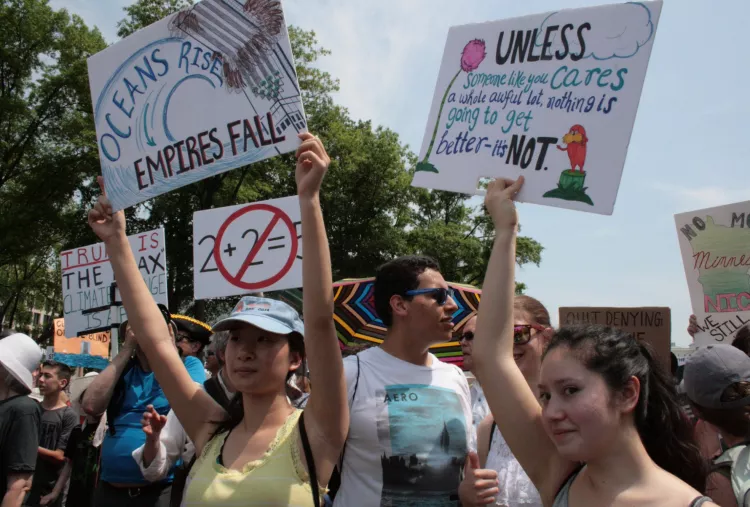Swarthmore Lends Voice to People's Climate March

Swarthmore students at the People's Climate March included (from left) Wendy Tan '19, Bryan Alvarez '19, Natalie LaScala '19, and Michelle McEwen '19. Photo by Melissa Tier '14.
A group of students from Swarthmore made their voices heard at the People's Climate March in Washington D.C., on Saturday, joining a chorus of 200,000 citizens protesting the environmental policies of the current administration.
For event organizers, the march was an opportunity to proclaim that climate change is real. For September Porras Payea ’20, it was a chance to “stand in solidarity” with people and communities imperiled by climate change.
“Going out there and showing how strong we are as a movement was something that I was glad to be a part of,” says Porras Payea, of Orlando, Fla.
Swarthmore sent three buses of students, co-sponsored by the Office of Sustainability, Mountain Justice, Green Advisors, the Lang Center for Civic & Social Responsibility, the Dean's Office, and the Departments of Biology, Chemistry & Biochemistry, Computer Science, Engineering, Environmental Studies, Mathematics & Statistics, Physics & Astronomy, and Sociology & Anthropology, to the nation’s capital for the march. Sister marches were held around the world, including in Denver, Chicago, San Francisco, London, and Lisbon, Portugal.
Participants in D.C. marched from the Capitol to the White House, with chants such as “water is life” and signs bearing messages like that of Wendy Tan ’19: “Oceans rise, Empires fall.” They surrounded the White House before sitting down and beating their chests 100 times to reflect both President Trump’s days in office and the heartbeat of the People's Climate movement.
“It was an opportunity to show policymakers, media, and the broader public that climate change is an urgent issue that impacts people’s lives, and that we’re organized to fight it,” says Nathan Graf '16, climate action senior fellow for the Office of Sustainability.
The first of the three Swarthmore buses arrived on Friday, bringing students to a youth convening. Organizers led discussions on each person’s role in the political movement and offered training on organizing and connecting with youth climate justice groups from cross the country.
Co-organized by more than 50 organizations, the D.C. march brought together indigenous rights activists, climate scientists, educators, and religious groups, among others, to learn from and find ways to work with one another, Graf says. It was also a welcome center, of sorts, for people who care about the climate but have yet to get involved.
“With everyone in one place, it’s possible to learn about the work that many organizations are doing and figure out how to plug into that work yourself,” says Graf.
Porras Payea spent most of her time canvassing to raise young people’s awareness of the 2018 midterm elections, she says, which proved galvanizing.
“There is so much energy right now around the call for justice,” she says, “and this march really reflected that in every way.”



